Bulgari’s Hotel in Rome Pays Tribute to City, Italian Craftsmanship
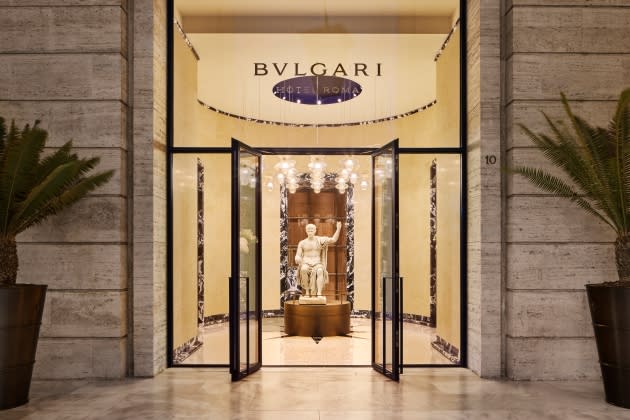
ROME — “To me, this is a monument to Italian excellence and its unique design and craftsmanship.”
Unveiling the new Bulgari Hotel here on Thursday, Jean-Christophe Babin, chief executive officer of the jewelry brand, enthused about the latest luxury unit — the ninth in the world — which has such a special meaning for its location, as Rome is home to Bulgari, and given its historical and cultural value.
More from WWD
Superlatives flowed easily, given the monumental size of the hotel, spanning over six floors and more than 151,000 square feet, plus an additional terrace with a breathtaking view of Rome, from the Vatican to Villa Medici. The opening party drew the likes of Bulgari ambassadors Zendaya and Priyanka Chopra while Fendi CEO Serge Brunschwig and LVMH Moët Hennessy Louis Vuitton managing director Toni Belloni also stopped by.
Bulgari opened its first hotel in 2004 in Milan and Babin said ideally the chosen city could have been Rome, but the right opportunity never came along. “We’ve always had our eye on Rome, and we were looking for an extraordinary location, which no competitor could rival. I like to think we are setting a new standard and we want to be a point of reference.”
After three years of careful restoration to protect the historical building while completely overhauling its interior, the hotel stands on the very central Piazza Augusto Imperatore — and a statue in Pentelic marble of the Roman emperor from the Torlonia collection is displayed in the hotel’s vestibule. This is the first of five of a series whose restoration is being supported by Bulgari and which will alternate in an exhibition, explained Babin.
The hotel is an example of Rationalist architecture, as the building was designed by Vittorio Ballio Morpurgo and built between 1936 and 1938. The building used to house the headquarters of INPS, the Italian Social Security Agency, and it faces the Mausoleum of Augustus and the Ara Pacis, the altar which celebrates the period of peace that the emperor imposed and which is now preserved within the museum designed by Richard Meier.
“This square is a starting point for Western civilization, a summary of Rome that is unique,” observed Babin.
“We want to be attractive on two levels, for business, economic or political, and culturally, for work and pleasure,” the executive continued. “And this level of luxury and sophistication is also delivered through the highest ratio of personnel per room — four employees for one room.”
As in the other Bulgari Hotels & Resorts, the interiors were conceived by ACPV Architects Antonio Citterio Patricia Viel. The terrace was designed by P’Arcnouveau, with more than 200 different plants. In total, more than 4,500 plants pepper the different areas of the hotel, from ferns and gum palms to fruit trees and aromatic herbs.
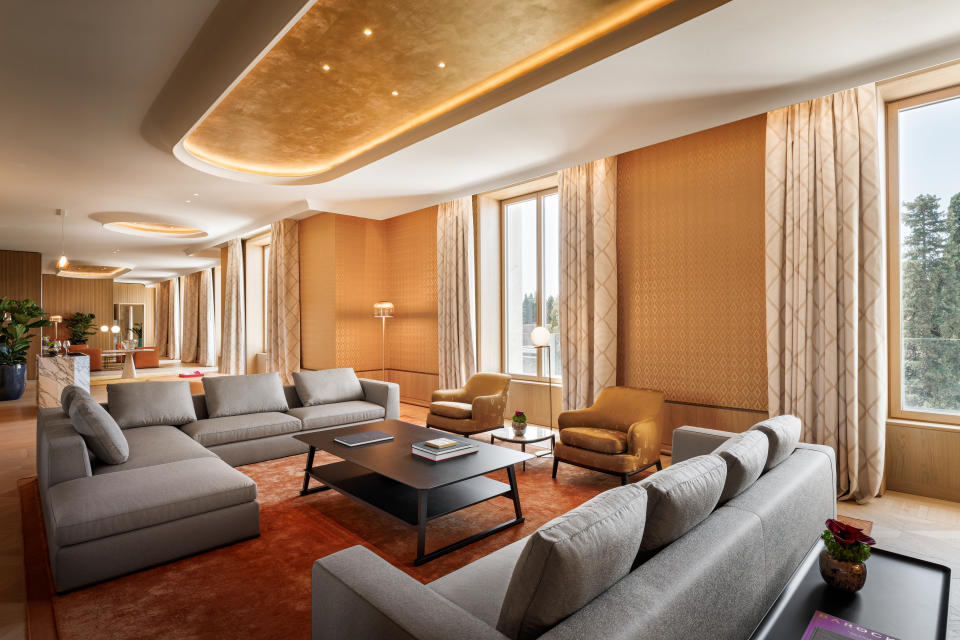
The foyer is a five-meter high circular space entirely clad in Chiampo marble, the same used by Morpurgo for the building’s original entrance, and is lit up by a large Barovier & Toso chandelier in Murano glass with gold dust.
A star with eight points — the symbol of the hotel and a signature Bulgari logo at the entrance of the brand’s Via Condotti boutique in the Italian capital — is positioned on the floor in black marble.
The secondary entrance on Via Della Frezza is entirely clad in walnut in a finish that was widely used in the 1930s.
Color is the central theme of the interior design project — a distinctive sign of Bulgari’s jewelry and also pointing again to Augustus, who imported colored marble from all of the provinces of the Mediterranean into the capital — an early sign of inclusion and diversity, Babin said. He feels this also “creates emotions and resonates with guests from all over the world, respecting their taste and habits, and making them feel more welcome and at home.”
Four palettes characterize the rooms, the bedheads, the fabrics of the furniture and the 1962 Arco di Flos lamps, and are reflected by the marbles used in the bathrooms: Yellow Brocatelle marble from Iran; red jasper marble from Sudan; green quartzite, and Taj Mahal white marble from Brazil.
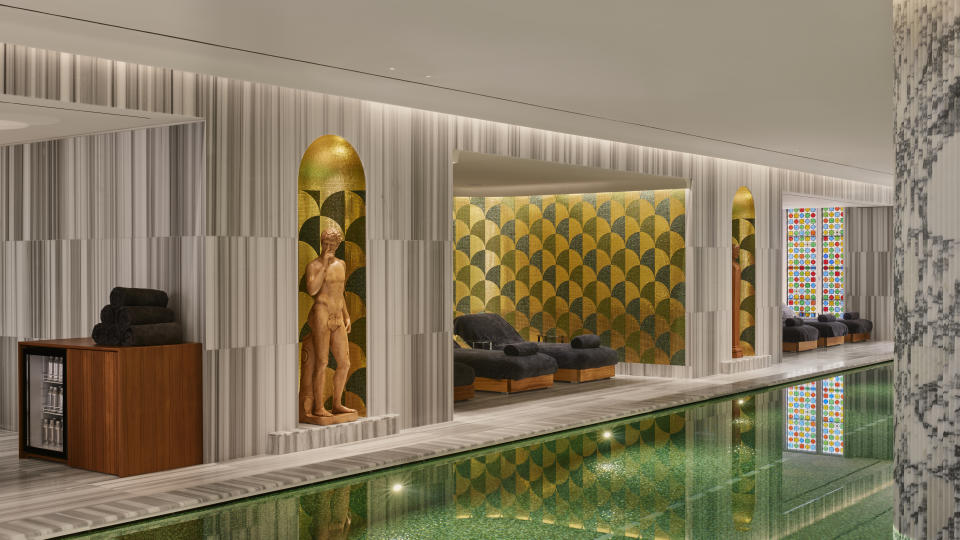
“We have been working with the city to reposition Rome not only as an open-air museum, but as a city of the 21st century and projected into the future, like Tokyo, Paris or New York,” said Babin, citing the avant-garde MAXXI museum or the capital’s candidacy for the Expo 2030. “We have been working with the city and the [Italian] state to give back to Rome the role it deserves, a city for the present and the future, a place where everybody would like to live.”
The hotel has 114 rooms, many of them suites, with prices ranging from 1,500 to 38,000 euros a night.
Three Michelin-starred chef Niko Romito is in charge of five different types of catering, from the restaurant to the bar and a café, which has an outside patio on the ground floor, under the imposing portico with stone columns.
The first Bulgari Dolci boutique in Italy offers the brand’s chocolate “gems” and pastries.
The hotel also houses a library comprising a selection of books on Roman art, design, history and architecture and beautiful vases by Gio Ponti, artistic director of Ginori in the 1930s, that are positioned on storied Albini for Cassina shelves.
The circular shape of the mausoleum is reflected in rounded mirrors or the plaster ceiling roundels.
All the furniture has been made by Italian companies: the upholstered items by B&B Italia and Maxalto; the marble tables by Mangiarotti for Agapecasa; lamps by Flos and Fontana Arte, and silk carpets by Altai.
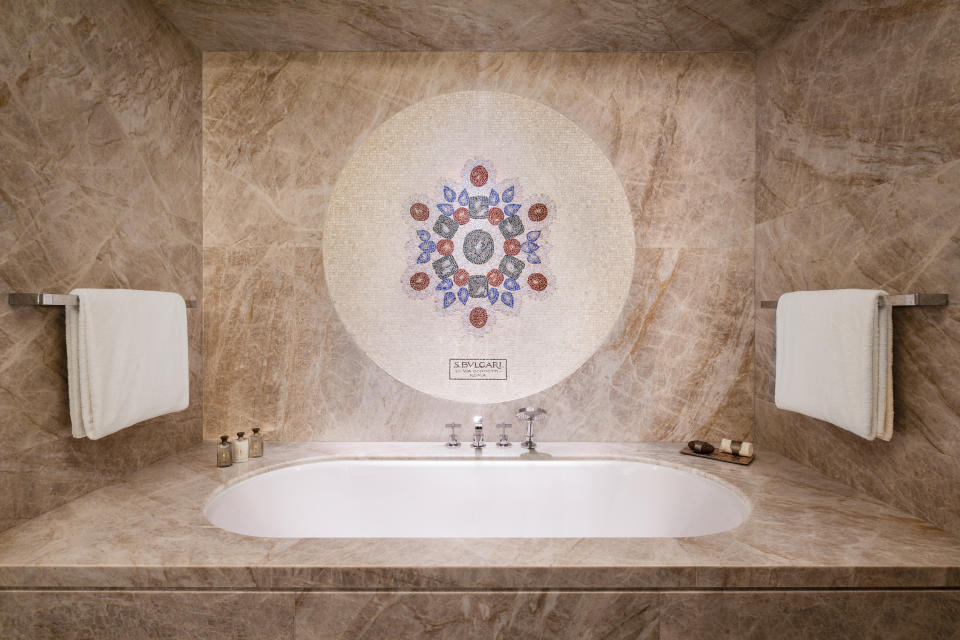
In the spa, which offers nine treatment rooms, large marble columns and precious mosaics in the pool are reminiscent of the Baths of Caracalla. Handcrafted marble mosaic roundels are a fil rouge in the hotel, as each bathroom in each room has a different one, reproducing storied Bulgari brooches.
Morpurgo tapped some of the best artists of the time to create frescoes on the building, including an expansive mosaic on the facade by Ferruccio Ferrazzi, director of the mosaic school of the Vatican, that celebrates Virgil’s myth of the foundation of Rome — a further sign of the importance of the building in the history of the city.
Other standout items are custom-made fabrics by Rubelli, inspired by Bulgari motifs; handcrafted Murano glasses, and lights and walls in blown Venetian crown glass.
The other Bulgari Hotels are in Milan, which has gone through some recent renovation, including a new suite, and in Bali, London, Paris, Beijing, Shanghai and Tokyo. Openings are scheduled in the Maldives and Miami in 2025 and in Los Angeles in 2026.
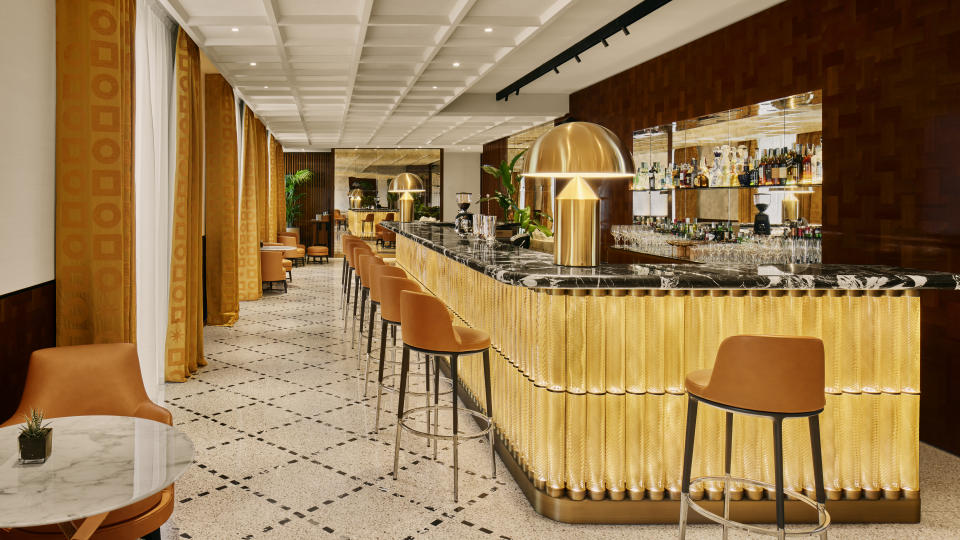
Best of WWD

